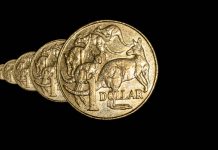Markets
Another abrupt and sharp sell-off in core bonds initially hurled yields in the US almost 10 bps higher yesterday. The long end underperformed. This happened despite economic data, excluding weekly jobless claims, coming in on the weak side of expectations. Things shifted when US traders were fully warmed up. They couldn’t resist and swooped in on the battered Treasuries. Bonds in the end closed the day higher with net daily yield changes ranging between -1.5 bps (30-y) and -7.8 bps (2-y). German Bunds underperformed Treasuries with yields rallying well into the double digits. Here too data would have suggested otherwise. German HICP rose slightly less than expected by 0.2% m/m to 4.3% y/y. Missing out partially on the UST comeback, German rates still finished 4.2 bps (2-y) to 8.7 bps (10-y) higher. The 10-y yield hit a new cycle high north of 2.9% and the European 10-y swap rate (+8.2 bps) took out the previous cycle high of 3.41%. European peripheral spreads were on the rise with Italy hitting 200 bps before calm returned. Equity markets posted decent gains (EuroStoxx50 +0.72%, US indices between +0.35-0.83%). They weren’t even that bothered with the initial yield surge to begin with. The dollar fell in what looks like a profit-taking move after a sharp rally. EUR/USD rebounded from important support between 1.0484 and 1.0516 to end at 1.0566. USD/JPY eased marginally to 149.31. DXY dropped to 106.224 but without compromising the upward sloping trend channel. Sterling saw a chance to lock in some gains as the risk environment turned less hostile and gilts underperformed but had to forfeit on all of them. EUR/GBP closed slightly higher at 0.8658 after hitting an intraday low of 0.863. The likes of oil turned in about half of the sharp gains a day earlier. Brent finished at $95.38/b.
Core bonds enter much calmer waters currently and the dollar eases further. Asian markets look for a positive close of the week and quarter, Japan being the exception. China is closed and will remain so next week (Golden Week holidays). Today’s economic calendar is centered around European inflation (seen at 0.5% m/m and 4.5% y/y) and an (outdated) US PCE deflator. Yesterday’s (exhaustion) moves, however, strongly hint at a short-term correction lower in core bond yields, regardless of the outcome. In the same logic we expect the USD to stay in the defensive today. EUR/USD may move further north of 1.0484/0516 support but has some way to go before meeting a first meaningful resistance (1.0674, 23.6% recovery on the Q3 decline).
News and views
The Banco de Mexico unanimously decided to leave its policy rate unchanged at 11.25%. Headline and core inflation eased further at 4.44% and 5.78% respectively in early September. Since the previous monetary policy decision, (medium and long-term) government bond yields increased. The Mexican peso exhibited volatility and depreciated. Economic activity shows resilience and the labor market remains strong. The bank assesses that the effects of the shocks continue to affect inflation, especially in services, in an environment where economic activity is more resilient than previously anticipated. In this context, forecasts for headline and core inflation have been revised upwards for the entire horizon. Inflation now is only expected to converge to the 3.0% target in the second quarter of 2025. In the previous forecast both measures were seen at 3.1% in Q4 of 2024. The bank concludes that it will be necessary to maintain the reference rate at its current level for an extended period. This suggests that a first rate cut might only come in 2024. The peso yesterday intraday rebounded from USD/MXN 17.72 to close at 17.54. This was mainly due to an overall USD correction, but the CB decision added to the momentum.
Inflation in Tokyo eased slightly further in September. The measure excluding fresh food declined from 2.8% to 2.5%. The core measure excluding fresh food and energy also eased from 4.0% to 3.8%, but remains elevated. Headline inflation is also mitigated by government measures to cap the impact from higher utility prices. Even so, the modest decline in inflation buys the BOJ time to assess further tweaks in its monetary policy. Other data published today indicated modest production activity (0.0% M/M, but better than expected) and growing retail spending (0.1% M/M and 7.0% Y/Y). Despite slowing inflation, Japanese long term yields continue to set new cycle top levels. (10-y 0.77%). The yen remains in the defensive with USD/JPY holding above 149.













